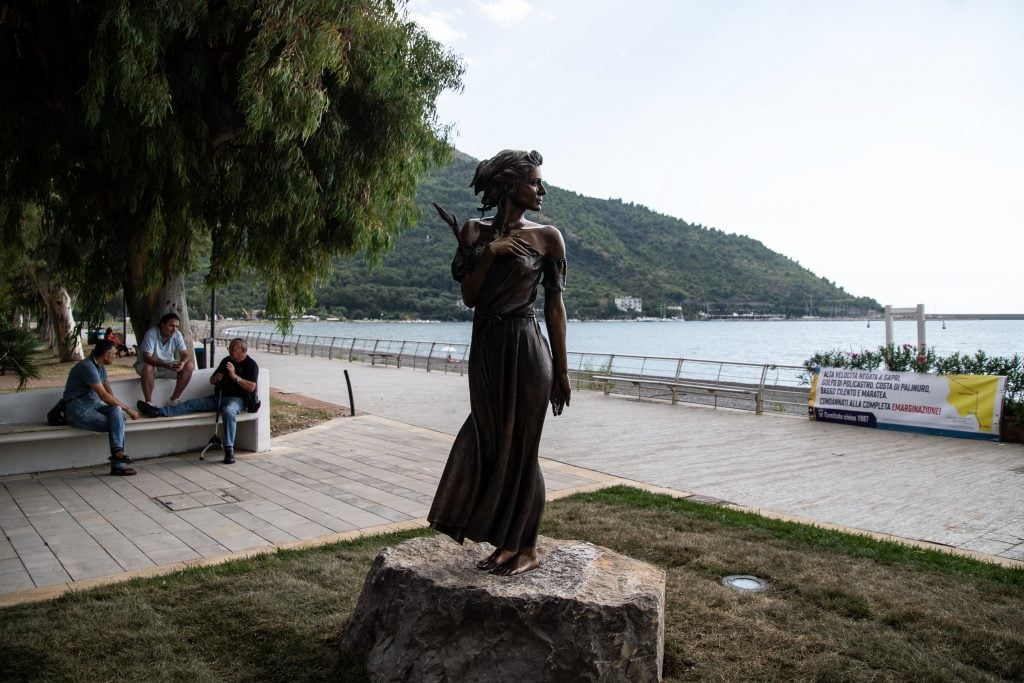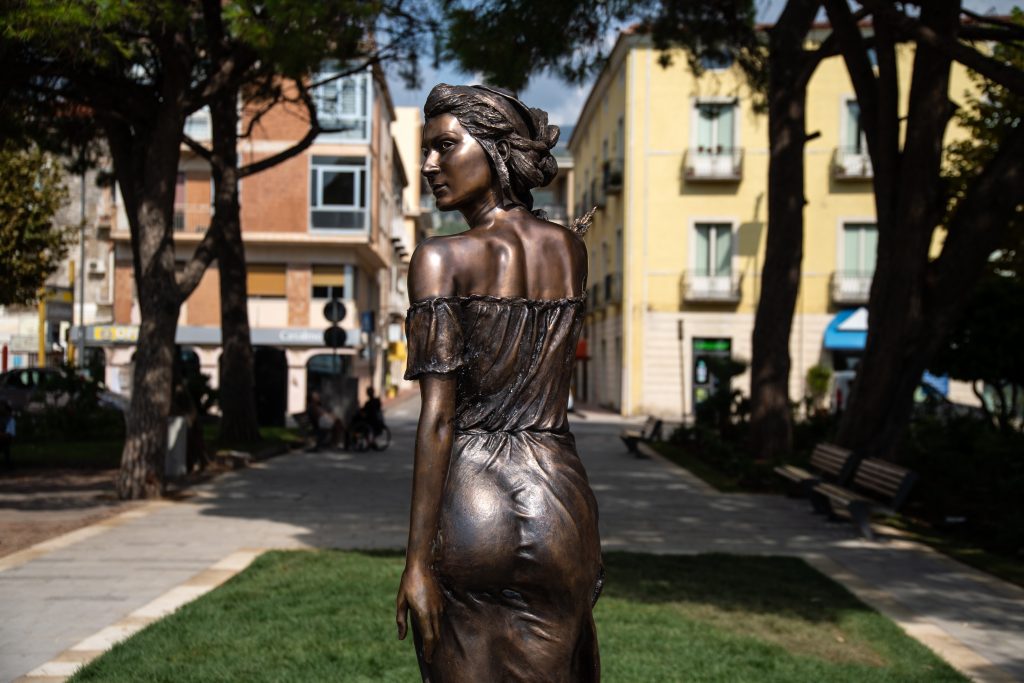Art World
Italian Women Are Decrying a New Public Monument Depicting a Female Figure With an Extremely Well-Defined Rear End
Emanuele Stifano's statue was unveiled this week In the Italian town of Sapri.

Emanuele Stifano's statue was unveiled this week In the Italian town of Sapri.

Sarah Cascone

A group of Italian women politicians are calling for the removal of a new public monument that depicts a female figure with a rather prodigious and gratuitously defined rear end.
Emanuele Stifano’s statue La Spigolatrice was unveiled this week on the waterfront of the Italian town of Sapri.
“Once again, we have to suffer the humiliation of seeing ourselves represented in the form of a sexualized body, devoid of soul and without any connection with the social and political issues of the story,” a group of female Democratic Party politicians in Palermo said in a statement given to the Independent.
The statue is meant to represent the title figure in Luigi Mercantini’s poem “La Spigolatrice di Sapri,” which translates to “The Gleaner of Sapri,” reports the Guardian. The gleaner is a farm laborer who valiantly aids the Italian revolutionary Carlo Pisacane in his failed uprising against the Kingdom of Naples in 1857 (a real historical event that left 300 dead), but the poet presumably doesn’t make note of her bottom.
The statue appears to be wearing a transparent dress, which reveals the figure’s every curve in intimate detail. (Let’s be blunt: You don’t typically see a lot of butt crack in civic monuments.) Stifano nevertheless rejects the charges of sexism.
“I always tend to cover the human body as little as possible, regardless of gender,” he wrote on Facebook in Italian. If given the choice, the statue would have actually been “completely naked… simply because I am a lover of the human body.”
(To his credit, Stifano’s Flickr account is dedicated to a rather obscene statue of the martyrdom of the apostle Bartholomew, depicted completely nude, save for a flap of flayed skin that hangs down over his penis.)
“Since it was placed on the seafront, I ‘took advantage’ of the sea breeze that invests it to move the long skirt, and so highlight the body,” the artist continued. “This is to underline an anatomy that should not have been a faithful snapshot of a 19th-century peasant woman, but rather to represent an ideal of a woman, evoke her pride, the awakening of a conscience, all in a moment of great pathos.”
“It is not eroticism, it is not sexism, it is not vulgarity. It is the beauty of man and woman,” Stifano told Artnet News in an email translated from Italian. He noted that audiences have not objected to nudity that featured men, children, or the elderly in his earlier work, and that controversy is only “because it is a young woman’s body.”

Emanuele Stifano, La Spigolatrice in Sapri, Italy. Photo by Ivan Romano/Getty Images.
Photos of the opening festivities for La Spigolatrice show various male dignities in attendance, including Giuseppe Conte, the former Italian prime minister. In contrast, a number of the nation’s female politicians have taken to social media to denounce the work and its sexualization of the poem’s heroine, including senate member Monica Cirinnà and Democratic Party member Laura Boldrini.
The controversy recalls last year’s uproar over Maggi Hambling’s London monument to protofeminist Mary Wollstonecraft, which featured a nude woman emerging from what appeared to be fountain of molten silver. Detractors were not mollified by the artist’s insistence that the statue was a tribute to Wollstonecraft’s pioneering spirit, rather than a traditional likeness.